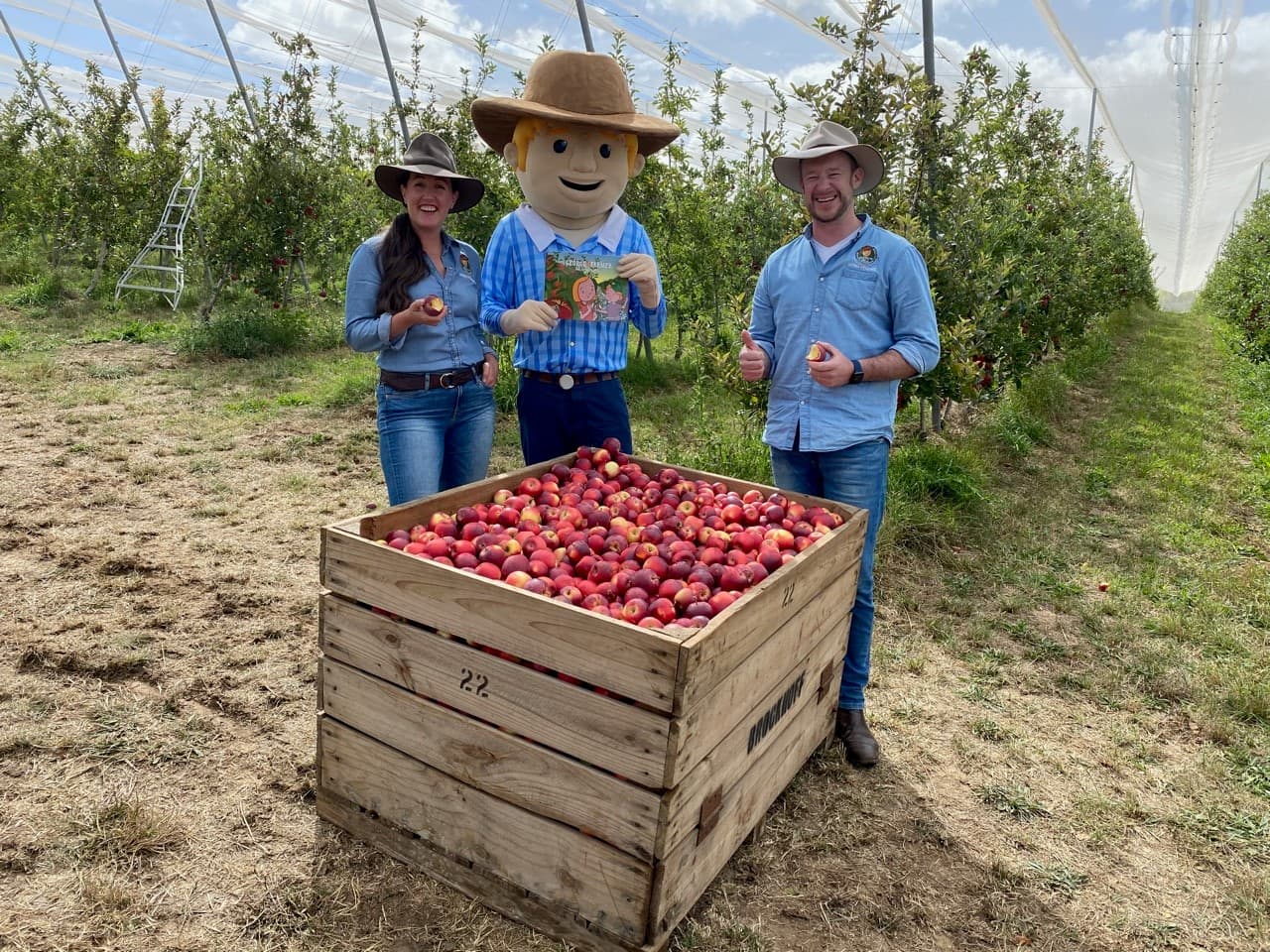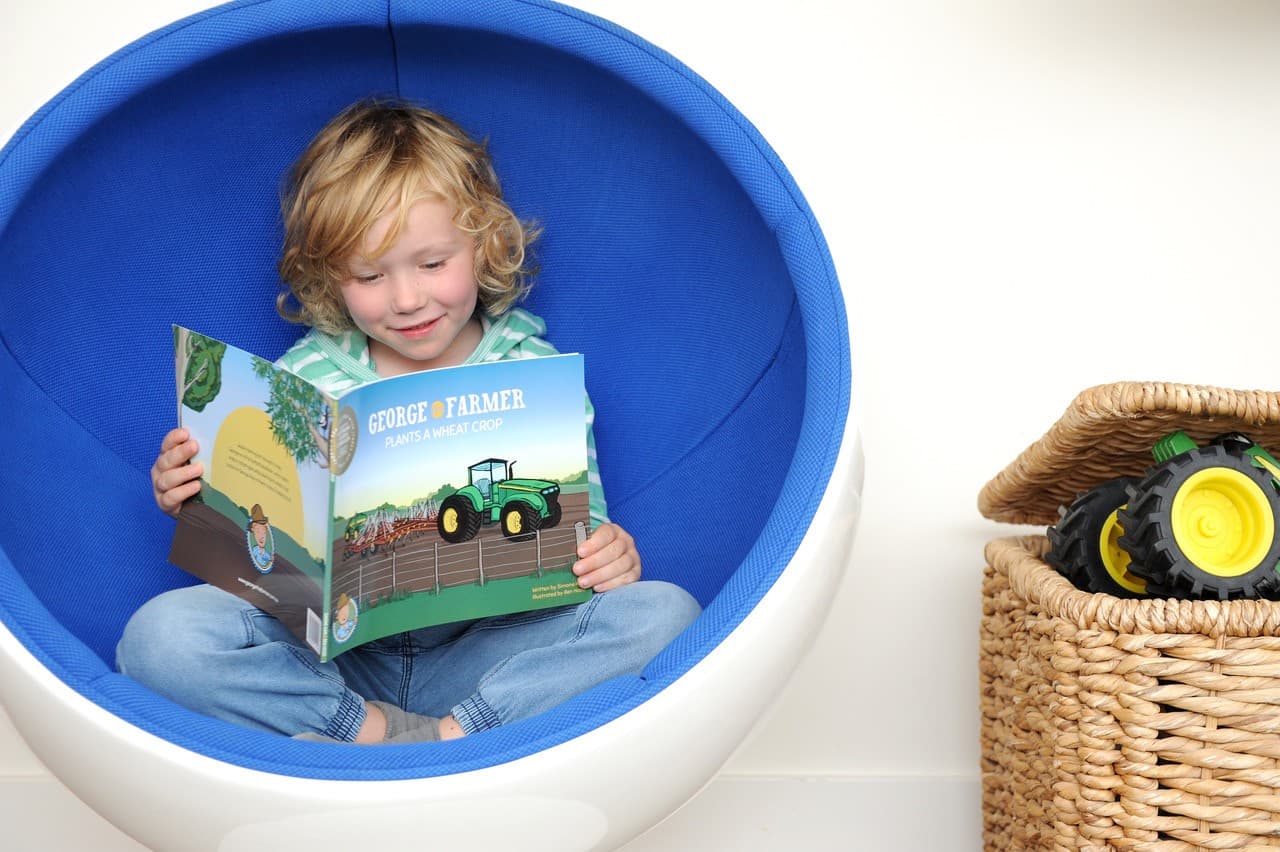Simone Kain is changing how children think about where their food comes from, through a simple character called George.
Growing up on a mixed sheep and cropping farm, she became passionate about rural Australia at an early age, and returned to her roots after attending boarding school in Adelaide.
Now as a mother of 3, her strongest desire is to inspire her children and other kids alike, on how important agriculture is to their everyday lives.
She was particularly alarmed by some stats she read on where kids thought their food was coming from, including the finding that one third of Australian year 6 kids thought yoghurt came from a plant.
In 2014, Simone proposed the idea of an educational brand dedicated to teaching children about farming practices along with how food and fibre is produced. This was where the character of George The Farmer came to life — bringing together a character and business that saw Simone named Women’s Agenda’s 2015 Emerging Entrepreneur of the Year.
George has become a figure featured in books, TV and music, to connect kids to food and farm. They have since released ten picture story books. Their latest book, ‘George the Farmer Hailstorm Heroes’, just released last Friday.
And Simone has gone on to win more awards, including the 2017 SA AgriFutures Rural Women’s Award, and subsequently being named the National Runner Up.
Women’s Agenda spoke with the entrepreneur to listen to her thoughts on her purposeful career journey, and what the future holds for her business.
Tell us a little bit about your background and your passion for rural Australia?
I grew up on a sheep and cropping property in regional South Australia.
My parents also had a livestock transport business that they operated from our home base. I was always surrounded by busy people involved in agriculture — truck drivers, farmers, shearers and livestock agents from a young age.
It was like a big, extended farming family. I went away to boarding school in Adelaide and really enjoyed it, but was keen to return home. I returned after Year 12 and was awarded a multimedia traineeship at a government organisation after which I established my first business in website development at the age of 18 in 1998 after identifying the internet as having massive potential, coupled with the fact there wasn’t really anyone working in that space in regional SA at that time.
It was then that I realised how passionate and connected to rural Australia I actually was. I wanted to see the people, businesses and industries that are based in rural Australia really succeed.

You are the co-creator of George the Farmer, which aims to educate children about farming practices along with how food and fibre is produced. What sparked this idea and how were you able to bring the character to life?
In July 2012, I was lying on my bed one afternoon with my then 2 year old son, George, stretching out my rather large pregnant belly (I was pregnant with twins). I was trying to find some fun farming apps or books for George to keep him entertained when his new brothers arrived. He was obsessed with the farm and any opportunity that he had to go on our farm with Justin or to look at magazines with trucks, harvesters or tractors, he’d jump at it.
In my search, all that I could find were American or English stories that used different terminology – such as barn instead of shed – or field instead of paddock – and there also wasn’t one character who was telling sequential stories about life on the land.
At this same time, our local economy was slowing due to the ongoing effects of the Global Financial Crisis and Ben (my new business partner) and I had been actively thinking of new ways to bring in additional revenue to sustain our business – most of these ideas were focusing on app development.
So after an unsuccessful search to find a farming character, I suggested to Ben that we create our own character in-house utilising our creative, tech and marketing skills.
I’d always wanted to write a children’s book and Ben was getting in to illustrating at the time, so we decided to write and illustrate a story to potentially inspire lots of little farming kids, just like George, across the country – and if we created it as an interactive story app we could then use the app in our folio to try and gain future app clients for our creative agency.
Although the idea for George was to be inspirational, it wasn’t long into developing the brand and the first story that I came across some pretty staggering statistics which made us rethink what George’s main purpose should be.
A survey released in 2012 revealed that almost 1/3 of Australian Year 6 kids thought yoghurt came from a plant, 75% thought that cotton came from an animal and 45% didn’t associate basic lunch box items such as a piece of bread, a banana or some cheese as originating from a farm.
This blew me away. Coming from a farming background and being married to a farmer, I found it hard to believe that there was this massive disconnect occurring between those who play such an important role of producing our beautiful, clean green food that we’re lucky to enjoy here in Australia – and those who eat it. It was then that I realised not only did the character need to be inspirational, it needed to be educational. And although George the Farmer is named after my son, George, it was really important that there was good female representation in the stories. George is joined by his very smart and talented wife, Dr Ruby, who is an agronomist and has a PhD in viticulture.
From this humble idea, we have now published ten picture story books, a range of merchandise including Australian made out of Australian cotton t-shirts and cuddle dolls, paddock to plate live action videos which air on YouTube and ABC iView as well as a series of free curriculum-aligned educators guides to assist teachers to educate kids about agriculture in the classroom while also ticking off STEAM subjects (science, technology, engineering, arts, maths) for Foundation to Year 4. We are a social enterprise and reinvest a portion of our book sale profits into producing our free to use educational content.










